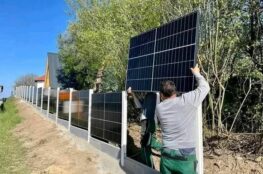Eskom is fighting an ongoing war against the lights going out. Who, then, might save Eskom from a seemingly hopeless situation? Manufacturers of the original equipment (OEMs) are to blame. They’re taking on leadership roles that might shock some people.
Everyone who has dealt with Eskom understands that load shedding is a real problem that is simply getting worse. As we strive to adopt cleaner energy sources, we often neglect the first and most important step: making the most of what we already have. Before making a lane change, you should make sure it’s safe to continue in the one you’re currently in. For this reason, South Africa should get as much use out of its current coal-powered sources as possible before moving towards a green energy future.
Earlier this year, rumours concerning the German VGBE Energy Consortium began to gain momentum. The National Treasury gave them an evaluation of Eskom’s coal power stations to complete. If the wind is to be believed, this analysis will lead to a convincing argument. There has been talk of a concession model where Original Equipment Manufacturers (OEMs) are invited to help Eskom’s failing coal-fired power plants.
What’s the Deal?
- The primary source of power Despite their global prominence, South Africa is home to many prominent OEMs.
- They have been instrumental in the development of Eskom’s essential machinery.
- Unfortunately, Eskom distanced itself from OEMs and instead contracted with smaller, domestic firms.
- This decision is now under criticism, with many blaming it for Eskom’s present woes.
One would wonder, “Why OEMs?” OEMs have an advantage not merely because of their hardware expertise, but also because of their flexibility. They are experts at negotiating risky, lucrative long-term contracts and seem to have their operations adjusted so that their expansion parallels that of Eskom. OEMs care about the outcome and are willing to take responsibility for any setbacks. It’s a long-term collaboration based on trust and the same goal.
A webinar was attended on the 13th of July by influential people in the energy industry. Thomas Conradie, Head of Generation at Eskom, and Silas Zimu, Advisor to the Minister of Electricity, stand on opposite sides of the digital stage. They both reflect, in unison, the worth that OEMs provide. Since OEMs were responsible for designing and constructing Eskom’s infrastructure, they are seen as crucial partners in the effort to end power outages. They are qualified to provide individualised services because of their global experience combined with their in-depth knowledge of the local market.
These OEMs have faced a wide range of difficulties due to the dispersed nature of power plants around the world. This will provide students with the ability to think creatively when faced with a challenge. It’s like having a seasoned locksmith on hand who’s seen it all and knows exactly where to look for the perfect key.
To that end, think about businesses such as Babcock Ntuthuko Engineering. Here we have a seasoned OEM powerhouse that was temporarily sidelined due to an oversight in the contracting process. And while they’re on the bench, Eskom still can’t seem to get their power disruptions under control. Imagine if your team’s star player was sitting on the bench while you were losing games. The High Court’s judgment in favour of Babcock only serves to highlight how this chance was squandered.
South Africa, to put it bluntly, is at a turning point. The electricity situation is precarious, so any advice is appreciated. OEMs are more than a band-aid; they may be the only way to permanently fix the problem. Their wealth of experience can serve as a springboard for innovative strategies, streamlined procedures, and revitalised foundational systems at Eskom.
Now is the Time for a Pivot
The future of South Africa urgently needs power availability and reliability in that supply. Eskom’s partnership with original equipment manufacturers (OEMs) could be the key to a more prosperous and energised tomorrow. The obvious option is to draw on OEM’s wealth of knowledge and experience to help guide Eskom toward steadier times. After all, there is power in numbers.




